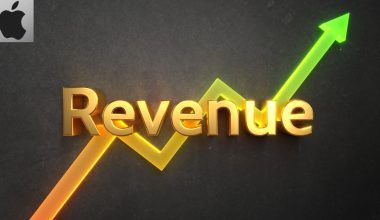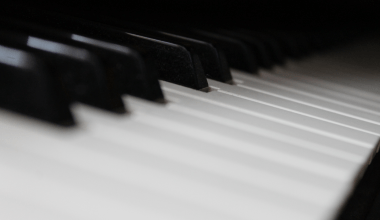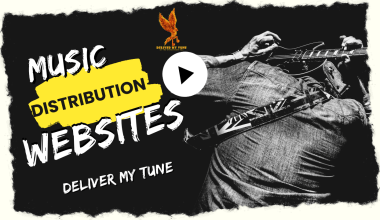Music distribution is a vital process for any artist looking to share their music with the world. In the digital age, understanding how music distribution works can significantly impact an artist’s success. This blog will break down how does music distribution work and guide you through every step of the process.
What Is Music Distribution?
Music distribution is the process of getting your music from the recording studio to listeners through various platforms. Traditionally, this meant getting physical copies like CDs or vinyl into stores. However, with the rise of digital streaming services, how does music distribution work has evolved. Today, it involves getting your music onto platforms like Spotify, Apple Music, and Amazon Music.
The Evolution of Music Distribution
In the past, how does music distribution work was heavily dependent on record labels. These labels would control the distribution channels, deciding which artists’ music would be made available to the public. With the digital revolution, independent artists now have more control over their music distribution. They can choose digital distributors to release their music globally without the need for a record label.
The Role of a Music Distributor
A music distributor acts as the middleman between the artist and the streaming platforms. How does music distribution work often involves partnering with a digital distributor who will ensure your music is uploaded to various streaming services. They handle the technical aspects, making it easier for artists to focus on creating music.
Types of Music Distributors
There are two main types of distributors: aggregators and label services. Aggregators are ideal for independent artists because they distribute your music to platforms for a one-time fee or a small percentage of your royalties. Label services, on the other hand, offer more comprehensive packages, including marketing and promotion, but often require a higher percentage of your earnings.
How to Choose a Music Distributor
When deciding on a distributor, consider factors like pricing, platform reach, and additional services. Understanding how does music distribution work means knowing that not all distributors are the same. Some may offer additional benefits like playlist pitching, which can increase your chances of being featured on popular playlists.
The Music Distribution Process
1. Preparing Your Music
Before you can distribute your music, you need to have high-quality recordings. This involves mastering your tracks to ensure they sound great on all platforms. How music distribution works starts with having a finished product that meets industry standards.
2. Uploading Your Music
Once your music is ready, you’ll need to upload it to your chosen distributor’s platform. This process typically involves uploading your audio files, album artwork, and providing metadata like song titles, artist names, and genres. How music distribution works at this stage is crucial because accurate metadata ensures your music is properly categorized and easily found by listeners.
3. Setting a Release Date
One of the key steps in how does music distribution works is setting a release date. This date is when your music will go live on various platforms. It’s important to plan this date carefully to maximize impact, especially if you’re planning promotional activities around the release.
4. Distribution to Streaming Platforms
After uploading your music, the distributor will send it to all the major streaming platforms. This is where the bulk of how does music distribution work takes place. The distributor ensures that your music is available on services like Spotify, Apple Music, Amazon Music, and more.
5. Monitoring and Reporting
Once your music is live, you can start tracking its performance. Most distributors provide analytics tools that show you how your music is performing across different platforms. How music distribution works doesn’t end with your music going live; monitoring and understanding these analytics is crucial for planning future releases.
Royalties and Payments
How Are Royalties Earned?
Royalties are the payments you earn each time someone streams or downloads your music. Understanding how music distribution works includes knowing how royalties are calculated. Streaming platforms pay royalties based on the number of streams, while download platforms pay a fixed amount per download.
Types of Royalties
There are two main types of royalties: mechanical royalties and performance royalties. Mechanical royalties are earned from the sale or reproduction of your music, such as digital downloads. Performance royalties are earned when your music is played in public, whether on the radio, TV, or a streaming service.
How Payments Work
Your distributor collects royalties on your behalf and then pays you, typically on a monthly or quarterly basis. Understanding how does music distribution work means keeping track of these payments and ensuring they align with your expectations.
Challenges in Music Distribution
Piracy and Copyright Issues
One of the biggest challenges in how music distribution works is dealing with piracy and copyright infringement. Distributors usually help protect your music by implementing digital rights management (DRM) to prevent unauthorized copying and sharing.
Competition and Visibility
With millions of songs available on streaming platforms, getting your music noticed can be difficult. How music distribution works involves not just getting your music on platforms, but also making sure it stands out. This often requires additional marketing and promotion efforts.
Tips for Successful Music Distribution
1. Optimize Your Metadata
Accurate and detailed metadata is essential for how music distribution works. It ensures your music is easily discoverable by listeners and can be properly categorized by streaming platforms.
2. Promote Your Release
Promotion is a critical part of how does music distribution work. Use social media, email newsletters, and other channels to build anticipation before your release. Collaborating with influencers or other artists can also help boost your visibility.
3. Engage with Your Audience
Building a relationship with your listeners is crucial for ongoing success. Engage with your fans through social media, live performances, and other interactive platforms. How music distribution works in the long term depends heavily on maintaining and growing your audience.
The Future of Music Distribution
The Impact of Technology
As technology evolves, so does how music distribution works. The rise of AI, blockchain, and other technologies could revolutionize the way music is distributed, offering new opportunities and challenges for artists.
The Role of NFTs
Non-fungible tokens (NFTs) are beginning to play a role in how music distribution works. NFTs allow artists to sell unique digital assets, such as exclusive tracks or artwork, directly to fans. This could provide new revenue streams for artists and change the way music is monetized.
Streaming vs. Ownership
The debate between streaming and ownership will continue to influence how music distribution works. While streaming dominates the market, there is a growing interest in owning music, whether through vinyl, digital downloads, or NFTs. Artists will need to adapt to these changes to maximize their revenue and reach.
Conclusion
Understanding how does music distribution work is essential for any artist looking to succeed in the music industry. From choosing the right distributor to optimizing your metadata and promoting your release, every step plays a crucial role in getting your music heard. As technology continues to evolve, staying informed about the latest trends in how music distribution works will help you stay ahead in the competitive music market.
For further reading, explore these related articles:
- How To Make YouTube Singles That Can Go Viral
- How to Earn with SoundCloud
- Artist Royalties on Spotify: A Comprehensive Guide
For additional resources on music marketing and distribution, visit Deliver My Tune.






